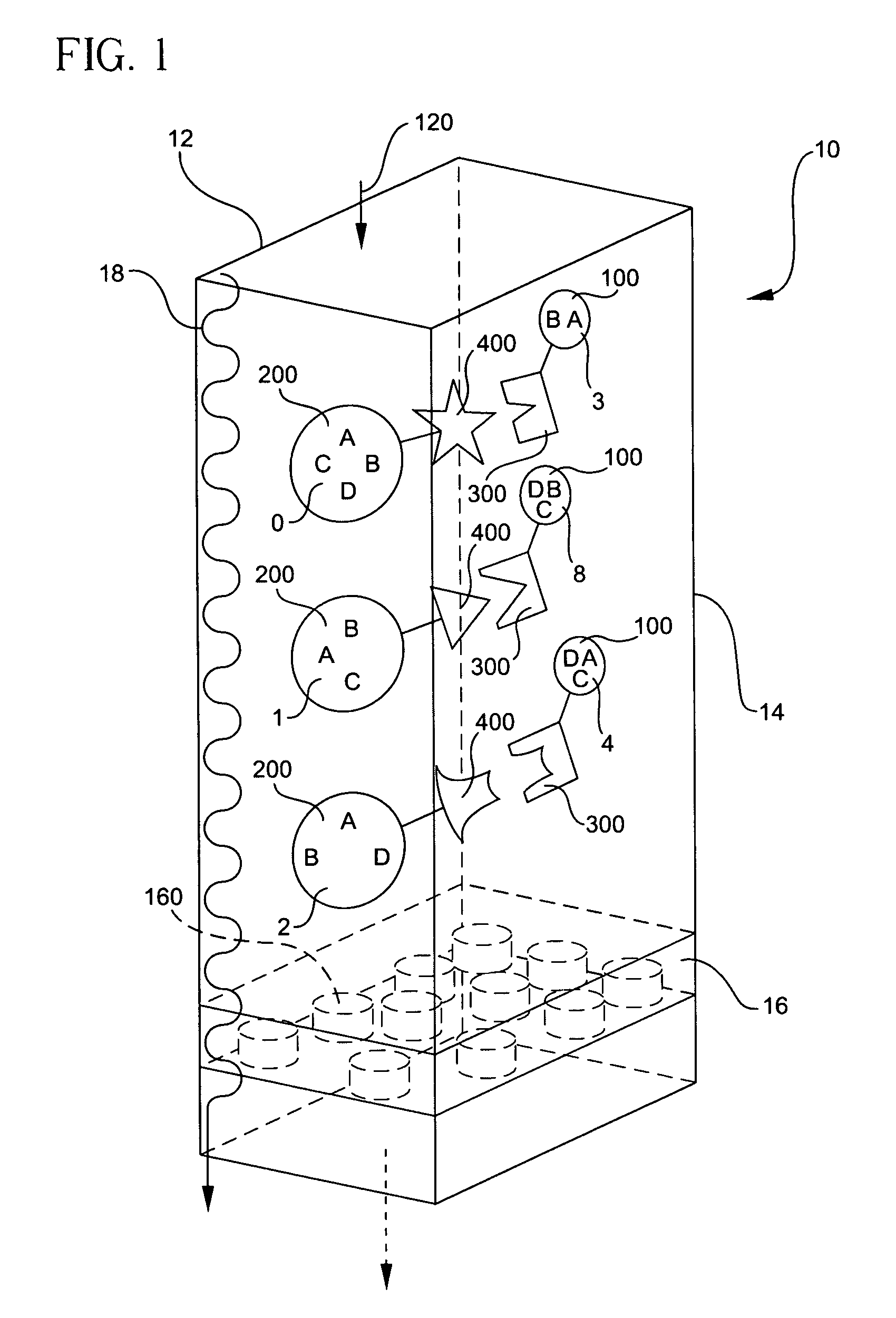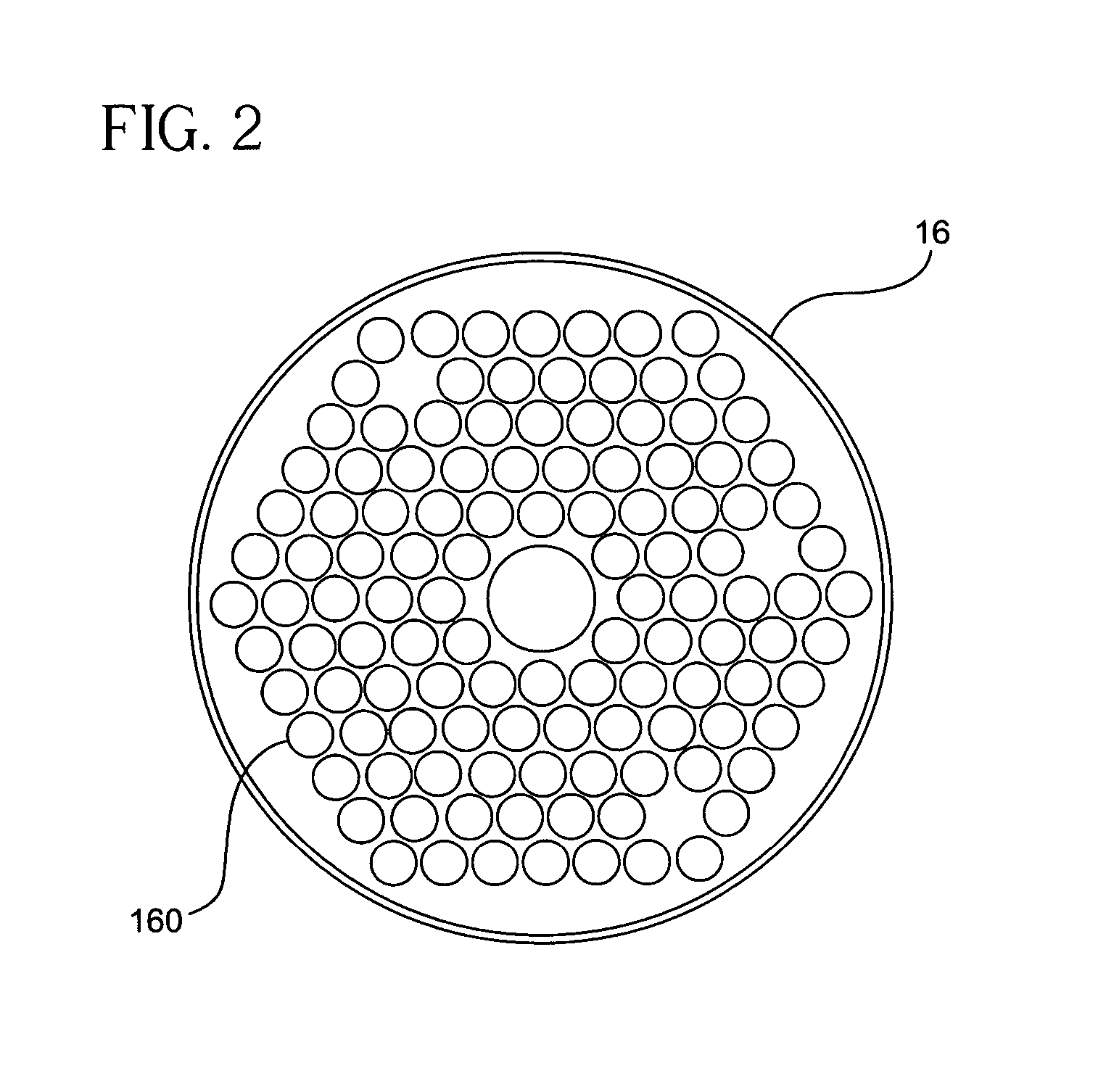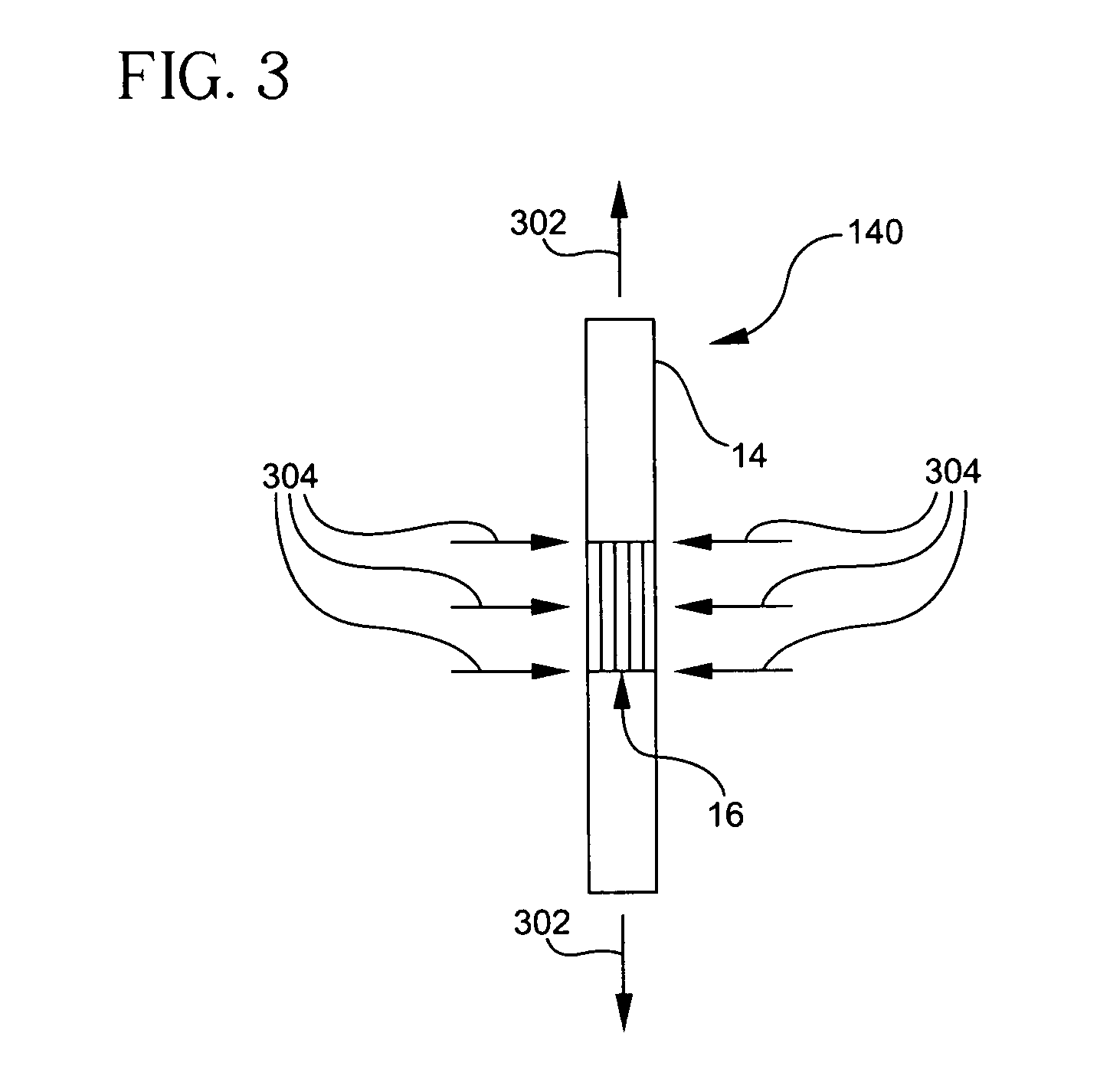Transparent filtered capillaries
a transparent filter and capillary technology, applied in the field of capillary tubes, can solve the problems of particle loss, multiple wash cycles and incubations, and the need for additional handling and transferring of the particle mixture, and achieve the effect of reducing the labor intensity of the multiple wash cycles and incubations, and improving the efficiency of the assay
- Summary
- Abstract
- Description
- Claims
- Application Information
AI Technical Summary
Benefits of technology
Problems solved by technology
Method used
Image
Examples
Embodiment Construction
[0022] Reference will now be made in detail to the present preferred embodiments of the invention, examples of which are illustrated in the accompanying drawings. Whenever possible, the same reference numerals will be used throughout the drawings to refer to the same or like parts. One embodiment of the microfluidic reactor of the present invention is shown in FIG. 1, and is designated generally throughout by the reference numeral 10. In accordance with the invention, the present invention for a method and apparatus of microfluidic reaction includes a first element or step of trapping one or more particles of predetermined nominal size or range of sizes that have entered a flow inlet 12. A transparent reaction zone 14 serves as an in-situ detection zone wherein the detection zone is arranged so as substantially to correspond in shape to an optical detector 456, as represented in FIGS. 4, 5, and 6. A porous filter 16 having a plurality of holes 160 being smaller than the nominal size...
PUM
 Login to View More
Login to View More Abstract
Description
Claims
Application Information
 Login to View More
Login to View More - R&D
- Intellectual Property
- Life Sciences
- Materials
- Tech Scout
- Unparalleled Data Quality
- Higher Quality Content
- 60% Fewer Hallucinations
Browse by: Latest US Patents, China's latest patents, Technical Efficacy Thesaurus, Application Domain, Technology Topic, Popular Technical Reports.
© 2025 PatSnap. All rights reserved.Legal|Privacy policy|Modern Slavery Act Transparency Statement|Sitemap|About US| Contact US: help@patsnap.com



